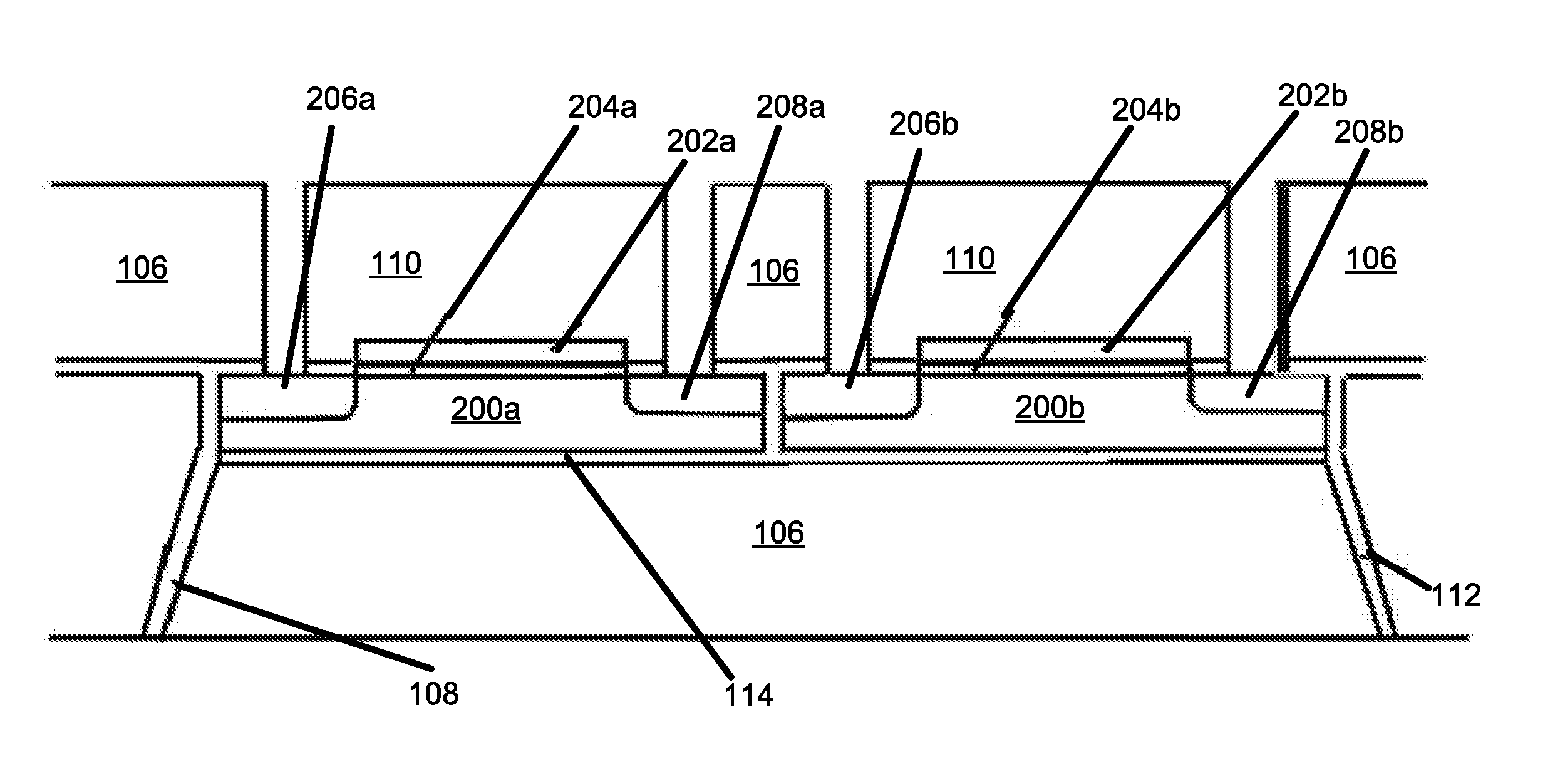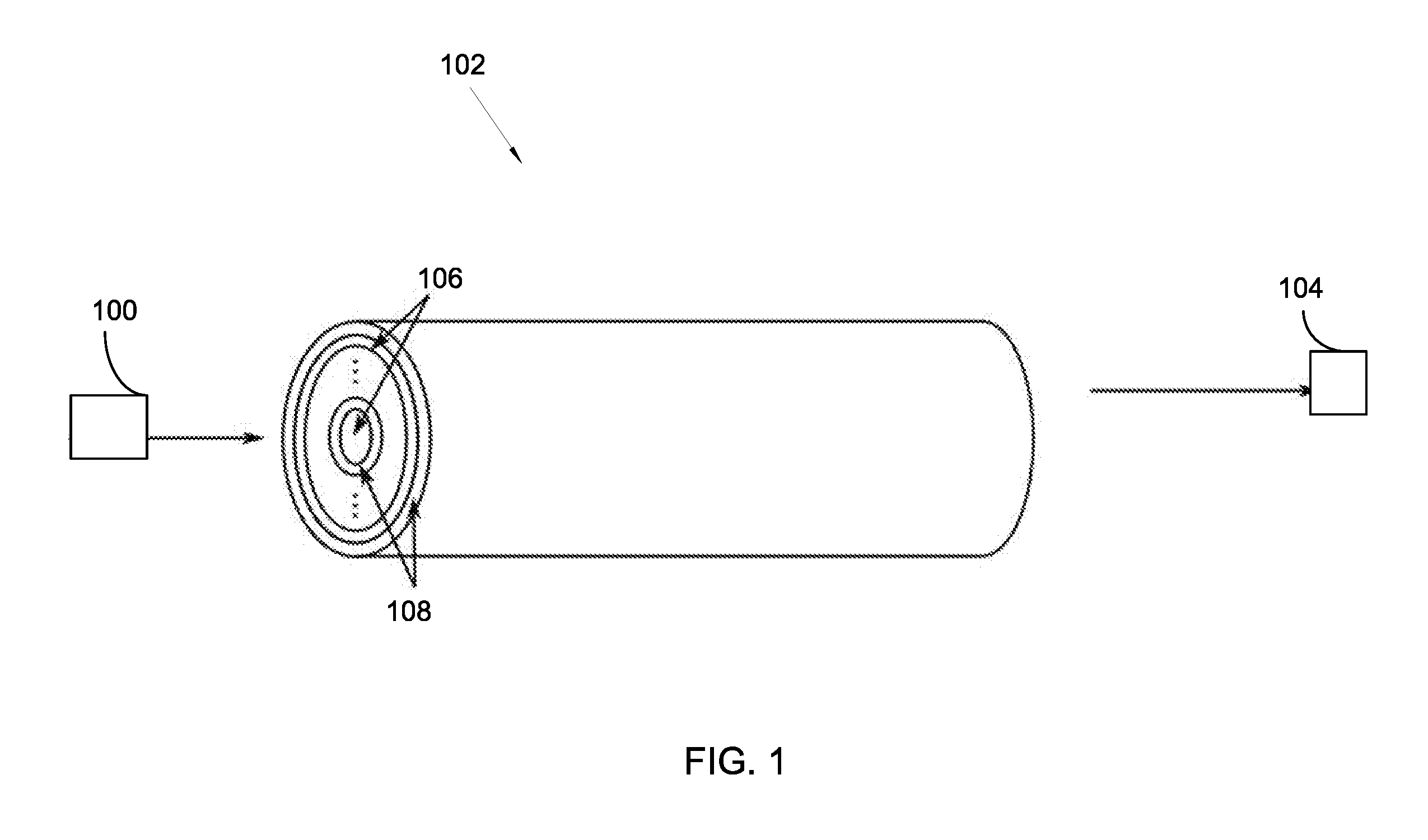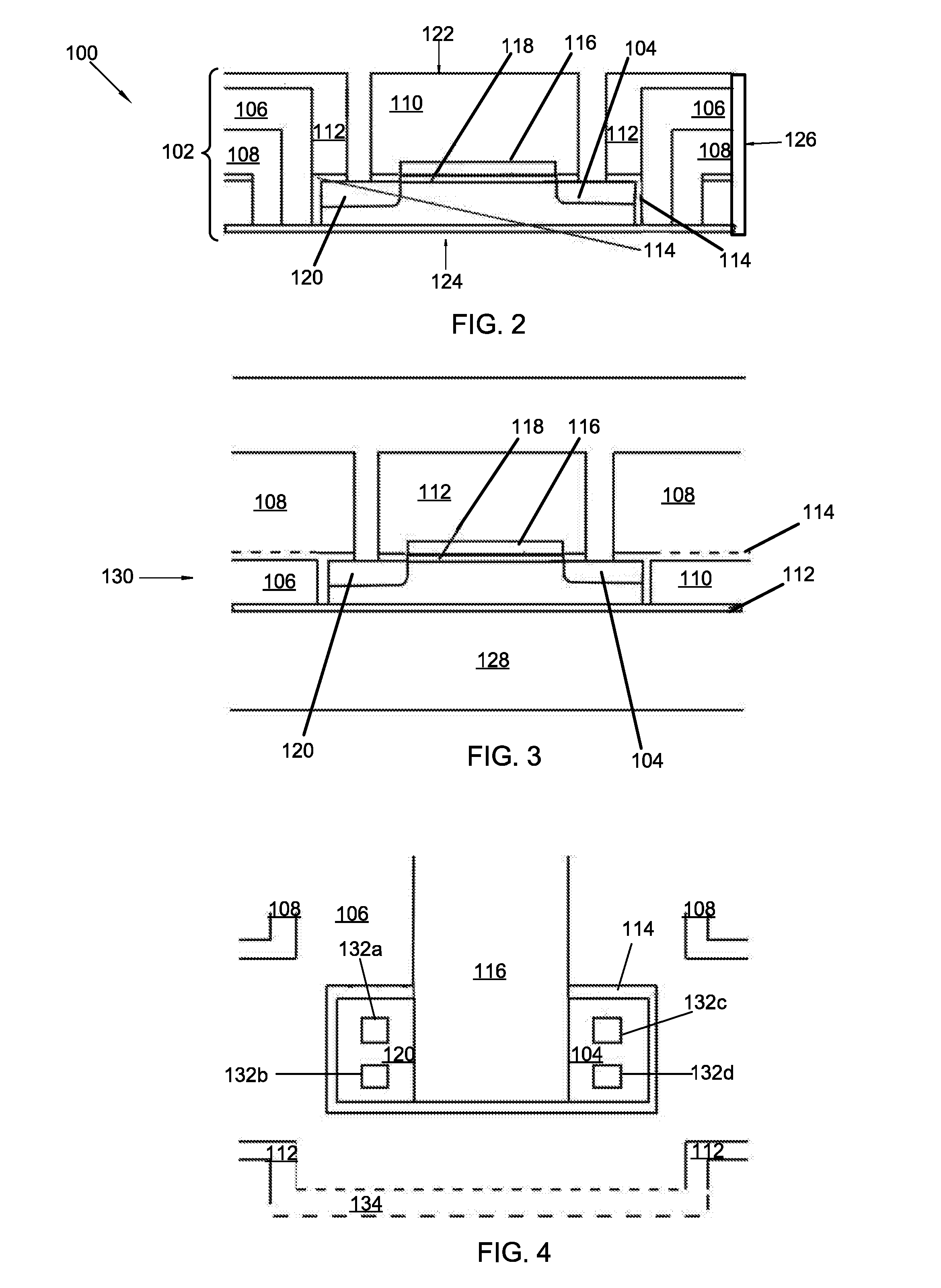Directional Heat Dissipation Assembly and Method
a heat dissipation assembly and directional technology, applied in the direction of semiconductor devices, semiconductor/solid-state device details, electrical apparatus, etc., can solve the problems of increasing the disparity in thermal conductivity, affecting the performance of the electrical system, and affecting the performance of the transistor, etc., to achieve the effect of increasing the disparity in thermal conductivities
- Summary
- Abstract
- Description
- Claims
- Application Information
AI Technical Summary
Benefits of technology
Problems solved by technology
Method used
Image
Examples
second embodiment
[0089]In a second embodiment, a structure of a transistor 130 with heat guiding structures for source, drain, and bulk regions including the conduction channel includes a directional heat guide member 102 composed of at least one layer or more of thermal conductivity layers encased in thermal insulative layers. The directional heat guide member 102 is connected to a heat source 120, drain, or bulk semiconductor 128 region, with connection to a heat source 120 or heat reservoir 104, i.e., drain region through a coupling barrier 114 that provides electrical isolation, and then connecting to the thermal conductor of the directional heat guide member 102.
[0090]In one exemplary use, the encasing thermal insulative layer 108 should be at least partially insulating the drain or source region. The directional heat guide member 102 should extend to a desired heat removal location, preferably, but not limited to, either a heat reservoir 104 or vertical directional heat guide, and finally coup...
third embodiment
[0091]In the present disclosure, a structure of a transistor 130 with a vertical heat guiding structure for source, drain, and channel regions includes: a transistor 130 surrounded along its perimeter by thermal insulator at least equal to the depth of the source and drain regions; an electrical insulator that is thermally conductive to a degree contacting the bottom of the transistor 130 or substrate directly under the transistor 130 within the thermally insulated region; and a directional heat guide which connects vertically through to the electrically insulating partially thermally conductive region.
fourth embodiment
[0092]FIG. 7 illustrates a cross section view of a group of transistors coupled to a thermal guide for directional heat flow control. Thus, the directional heat guide member can encase a number of transistors where the outermost transistor define the thermal insulator of the heat guide. In the present disclosure shown in FIG. 7, a structure of a group of transistors 200a, 200b with vertical heat guiding members regions includes: a group of transistors 200a, 200b surrounded along their perimeter by thermal insulative layer at least equal to the depth of the source and drain regions; an electrical insulator that is thermally conductive to a degree contacting the bottom of the transistors or substrate directly under the transistors within the thermally insulated region; and a directional thermal guide member which connects vertically through to the electrically insulating partially thermally conductive region. Further including a group of gates 202a, 202b; a group of gate insulators 20...
PUM
 Login to View More
Login to View More Abstract
Description
Claims
Application Information
 Login to View More
Login to View More - R&D
- Intellectual Property
- Life Sciences
- Materials
- Tech Scout
- Unparalleled Data Quality
- Higher Quality Content
- 60% Fewer Hallucinations
Browse by: Latest US Patents, China's latest patents, Technical Efficacy Thesaurus, Application Domain, Technology Topic, Popular Technical Reports.
© 2025 PatSnap. All rights reserved.Legal|Privacy policy|Modern Slavery Act Transparency Statement|Sitemap|About US| Contact US: help@patsnap.com



